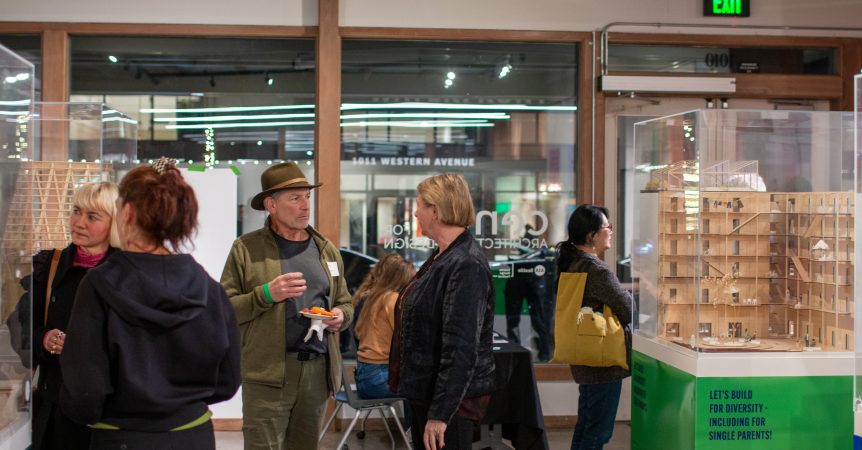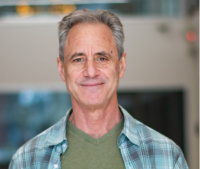Opening Reception, Image by Evan Chakroff
Frameworks for Progressive Living
Jun 06, 2025
Envisioning New Architecture in Seattle
Context is everything. When I walked through the doors of the Center for Architecture and Design in Pioneer Square, I was both shuffling off the rain caused by the blustering bomb cyclone menacing the region and suffering from the lingering, existential shock over the results of November 5. I was at the Center to attend the opening reception for the exhibition of Boliglaboratorium: A Danish Housing Lab.
As I entered the space carrying the aforementioned mental baggage, I found myself surrounded by action words that were at odds with how I was feeling—words like develop, transform, promote, support, and build. I then found myself embraced by concepts that were contrary to how I felt about our nation’s current political situation—words like diversity, multi-generational, non-profit, mixed housing, social life, synergy, and interaction. I actually relaxed…took a breath…shook off the cold…and immersed myself in the warm world of Scandinavian design.
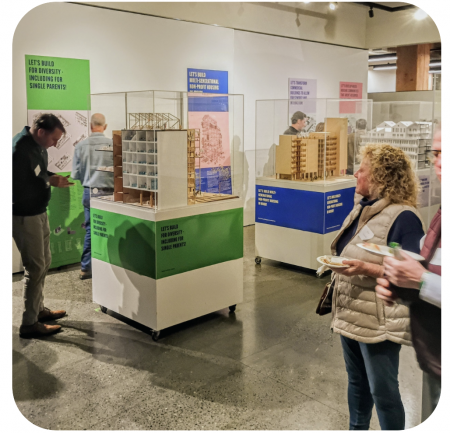
How do we create housing that addresses some of the greatest challenges of our time? Climate change, resource scarcity, new family patterns, loneliness on the rise, shrinking rural communities, big cities that can’t keep up with the influx of newcomers—these are housing challenges of our time. The industry needs to rethink our models of residential architecture.
The exhibit features Nordic-inspired architectural models and blueprints from six real-life housing projects that took place across urban and rural parts of Denmark. These designs not only experimented with frameworks (both literal and figurative) of building for modern life, but they also addressed the pressing global issues mentioned above.
If taking on all of these concepts strikes you as some kind of “pie-in-the-sky” progressive fever dream, you should check out this exhibition and delve into what I would call the Scandinavian Creative Mindset of “think big, swing for the fence, and anything is possible.” These forward-thinking ideas were not mere aspiration; they were actually put into action by architects, builders, and a variety of Danish communities.
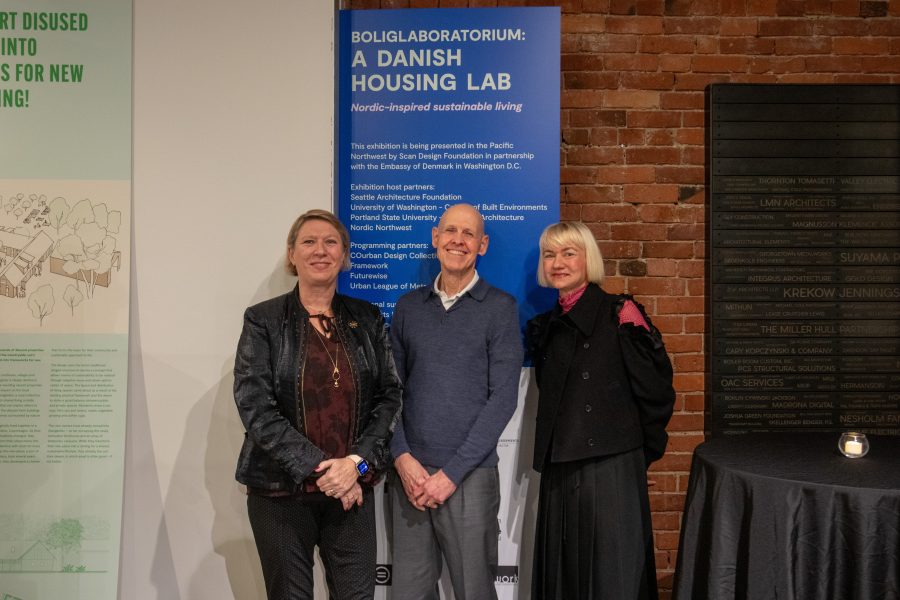
Kicking off the evening was the current President of Seattle-based Scan Design Foundation, Fidelma McGinn. She had this to say about the exhibit:
“Danes are great at thinking of how we can collaborate, share resources, and live together in sustainable/green ways that enrich our lives. These approaches to urban planning are uniquely Danish…but with a little left turn…they could easily be applied in the Pacific Northwest. Having this exhibit here in Seattle is a great way to support synergy between the Emerald City and Copenhagen.”
Frederikke Møller Kristiansen, the Cultural Attaché from the Royal Danish Embassy in Washington D.C., spoke next and offered delightful insight into the Danish mind-set: “65% of Danes believe that having an inviting living space is a primary source of joy in life.”
The sentiment she was hinting at is the Danish concept of hygge: a sense of “coziness and conviviality that engenders a feeling of contentment or social well-being.” How can a modern society create living spaces that address the myriad of hurdles presented by urban life while aiming toward a greener/more sustainable mode of construction and maintaining a sense of hygge? This exhibition highlights just how the Danes have taken on these multiple challenges.
A Danish Housing Lab is laid out as a circular tour through the six architectural projects that include descriptions, designs, and beautiful, to-scale models. At each stop, we are invited to engage in the specific project by examining the urban design challenges it took on. I was especially impacted by the project that addressed “mixed-housing communities that aren’t reserved for the few.”
The display presented a step-by-step process of how the architects and the specific community worked together to create a co-housing complex that addressed the various needs of each individual—especially those with accessibility needs. The designs tangentially confronted the impact that ableism can have on urban planning.
The critical-thinking processes that went into this particular project were remarkable. The designers visually imagined a series of ever-expanding circles that represented the “Three Levels Of Need” for a co-housing community. The circles began with personal needs, enlarged to domestic needs, and grew into communal needs. The overall effect was to incorporate the actual pragmatic needs of the individual to create a more inclusive space that worked for the entire collective.
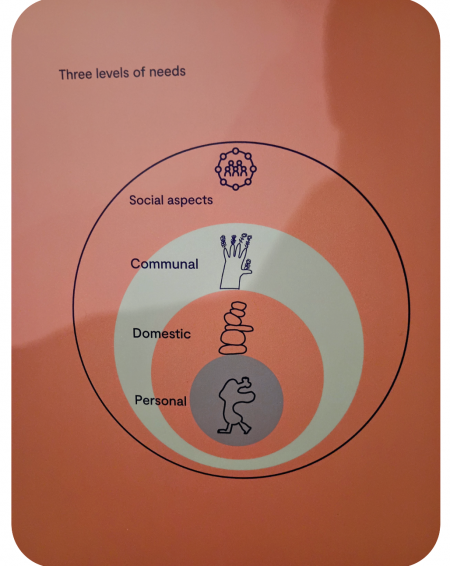
In true Danish fashion, however, this model also reflected the pursuit of hygge. Each individual was surveyed and asked to describe, in single words, what makes a home. The responses presented in the exhibit were often abstract and downright whimsical: love, humor, magic, quirky, hug, and structure. I would argue that most of these words are not usually associated with architecture—for instance, how does one actually build for “hug?” Check out the model and you will see how it was actualized.
For me, a lingering effect of Boliglaboratorium: A Danish Housing Lab was one of hope. I walked into the Center for Architecture and Design with heavy feelings brought on by the results of our national election; our country constantly seems to fight against the inherent progressive nature of democracy.
I walked out with a brighter sense of what is socially and culturally possible if a country truly embraces the ethos of “life, liberty, and the pursuit of happiness”—in other words, the pursuit of hygge. It can happen here.
